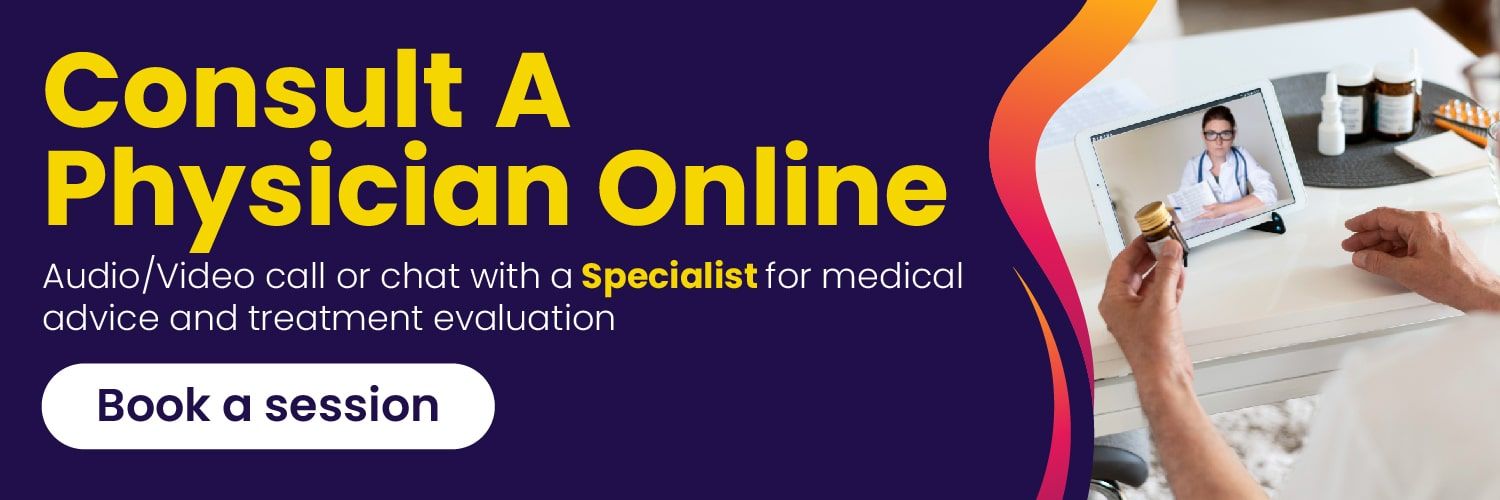Can A Panic Attack Cause You To Faint?
33 months ago
3 minute read.

Panic attacks are sudden episodes of intense fear or anxiety that can cause physical symptoms, including rapid heartbeat, shortness of breath, dizziness and fainting.
Panic attacks and fainting can be scary and overwhelming experiences for anyone. Fainting, also known as syncope, is a sudden loss of consciousness due to a temporary decrease in blood flow to the brain.
These symptoms may decrease the blood flow to the brain, which can cause a person to faint. Let's explore this further.
Decrease in oxygen levels
Hyperventilation is a primary cause of fainting during a panic episode.
Anxiety-induced hyperventilation can cause a reduction in oxygen to the brain, which can result in fainting.
Hyperventilation occurs when a person breathes too quickly and exhales more carbon dioxide than the body can replace. It can cause the blood vessels in the body to constrict, reducing blood flow to the brain. As a result, a person may feel lightheaded and faint.
It is critical to consult a medical professional if you experience frequent or severe fainting episodes to rule out any underlying medical conditions.

"Fight or flight" response
Vasovagal syncope is another cause of fainting during a panic attack or anxiety episode. When the body's "fight or flight" reaction is triggered, vasovagal syncope develops.
During a panic attack or anxiety, the body releases adrenaline, which increases heart rate and blood pressure.
In some situations, the body may overreact and trigger a "vasovagal response." This response causes blood vessels to widen, resulting in decreased blood supply to the brain and fainting.
Also Check [Fainting: Is It Your Heart Or Your Head You Need To Worry About?]
If you feel dizzy, try these
- Sit or lie down: If you feel lightheaded or dizzy, it's important to sit or lie down as soon as possible. It will help to prevent you from falling or collapsing.
- Elevate your feet: Elevate your feet if you are seated to enhance blood flow and prevent fainting. Put your feet on a chair or stool.
- Hydrate: Dehydration is a common cause of fainting, so it is essential to drink water or juice to rehydrate. It can help to prevent further episodes of fainting.
- Loosen tight clothing: Clothing that is tight around the neck or waist can restrict blood flow and cause fainting. If you feel lightheaded, loosen any tight clothing or remove any constricting items, such as a tight belt or necklace.
- Breathe deeply: Taking slow, deep breaths can help to improve blood flow and prevent fainting. It will also help you to relax and calm down.
- Cool cloth: Placing a wet piece of cloth on your forehead can help lower your body temperature and improve blood flow, which can prevent fainting.
- Avoid sudden movements: When you are feeling lightheaded or dizzy, it's important to avoid standing or sitting up too quickly. This can cause a sudden drop in blood pressure and trigger a fainting episode.
- Medical evaluation: If fainting episodes are happening frequently, it's wise to see a doctor for evaluation. This will help to determine the underlying cause and develop an appropriate treatment plan.
Manage panic attacks the right way
Panic attacks can be overwhelming. However, with proper techniques and strategies, it is possible to manage and reduce the likelihood of these episodes. Here are some effective ways to manage panic fainting:
- Deep breathing: Taking deep breaths can help slow down your heart rate and calm your nervous system. Try inhaling deeply through your nose and exhaling slowly through your mouth.
- Progressive muscle relaxation: This technique involves tensing and relaxing different muscle groups to release tension and stress in the body. It can help reduce feelings of anxiety and prevent fainting.
- Grounding techniques: Grounding techniques help bring you back to the present moment and provide a distraction from overwhelming feelings. Examples include focusing on your surroundings, counting objects, or touching different textures.
- Exercise: Regular physical activity can help reduce symptoms of anxiety and improve overall health, lowering the likelihood of fainting.
- Mindfulness: Mindfulness techniques, such as meditation or yoga, can help ease stress and promote relaxation. This can help prevent panic attacks and fainting.
- Seek professional help: If panic attacks and fainting are affecting your daily life, it may be helpful to seek the help of a mental health professional. Therapy, such as cognitive-behavioral therapy, can help you identify and manage triggers for panic attacks and fainting.

Conclusion
By incorporating the stated strategies into your daily routine, you can effectively manage panic fainting and improve your overall well-being.
The first step is to deal with the underlying emotional problem. Talk to a therapist on The Wellness Corner who can guide the person in developing appropriate coping and management skills to manage panic attacks.
Leave a Comment
Related Articles
Health Checks @ Home
Service
Explore
© 2025 Truworth Health Technologies Pvt. Ltd.




